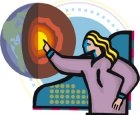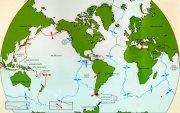
Worksheets and No Prep Teaching Resources
Reading Comprehension Worksheets
Earth Science

Earth Science
 Worksheets and No Prep Teaching Resources Reading Comprehension Worksheets Earth Science |
 Earth Science |
| edHelper's suggested reading level: | grades 9 to 10 | |
| Flesch-Kincaid grade level: | 8.99 |
|
Moving Plates
By Trista L. Pollard |

|
 1 Once Wegener and other scientists began studying the movement of our continents, more hypotheses and theories were developed. During the 1960's scientists developed the theory of plate tectonics. This theory explains the reason continents move and change our planet's crust.
1 Once Wegener and other scientists began studying the movement of our continents, more hypotheses and theories were developed. During the 1960's scientists developed the theory of plate tectonics. This theory explains the reason continents move and change our planet's crust. |
Create Weekly Reading Books
Prepare for an entire week at once! |
| Leave your feedback on Moving Plates (use this link if you found an error in the story) |
 |
Earth Science
|
 |
High School Reading Comprehensions and High School Reading Lessons
|